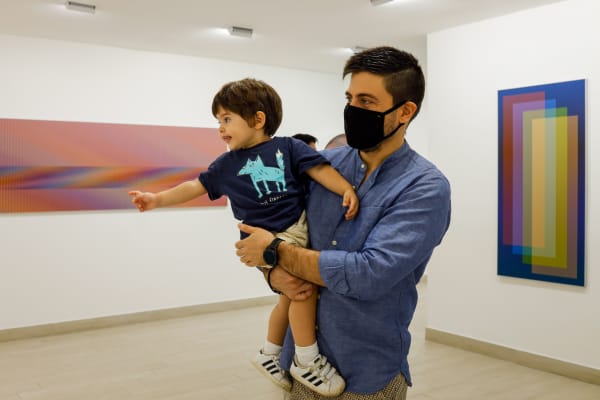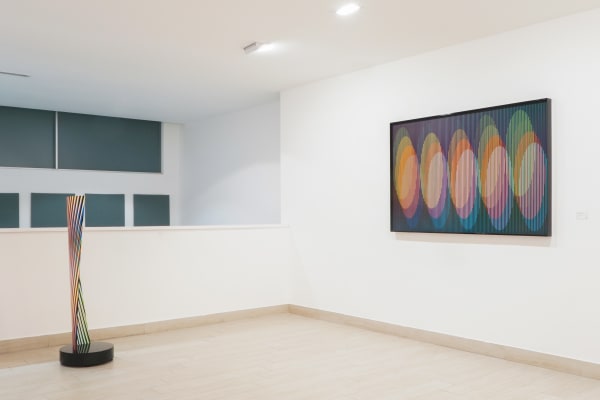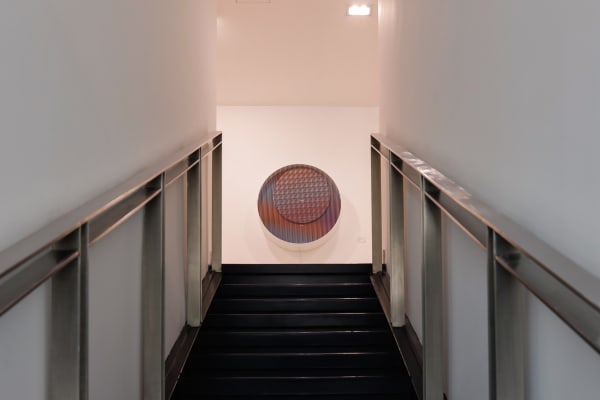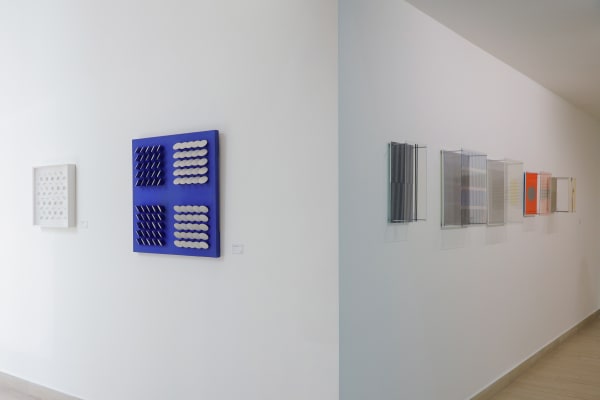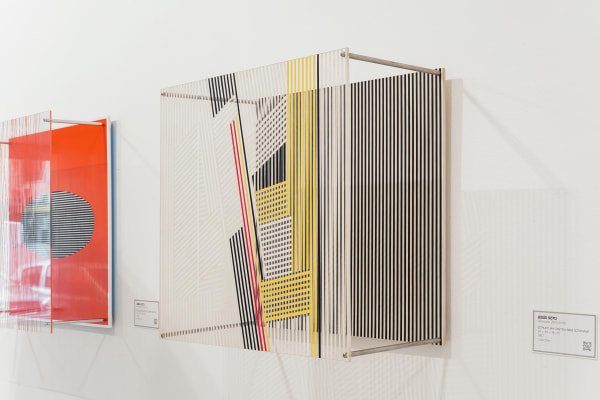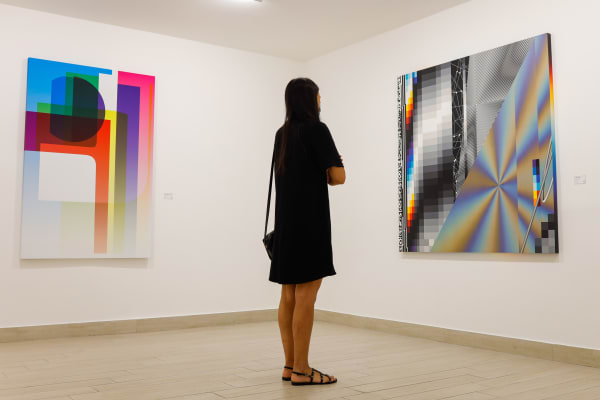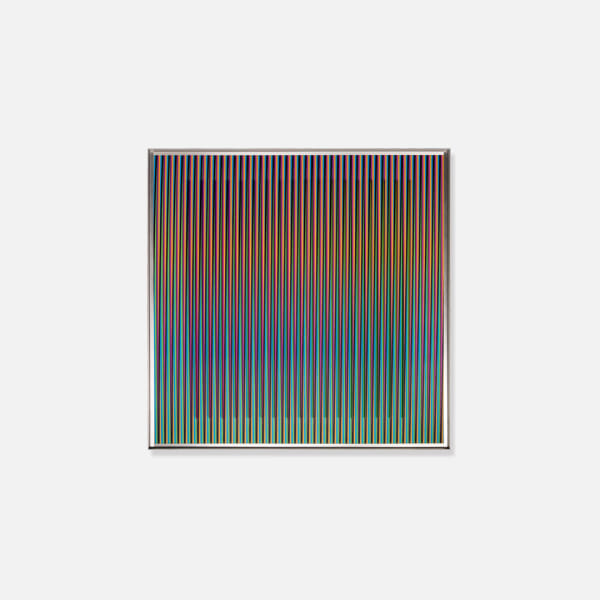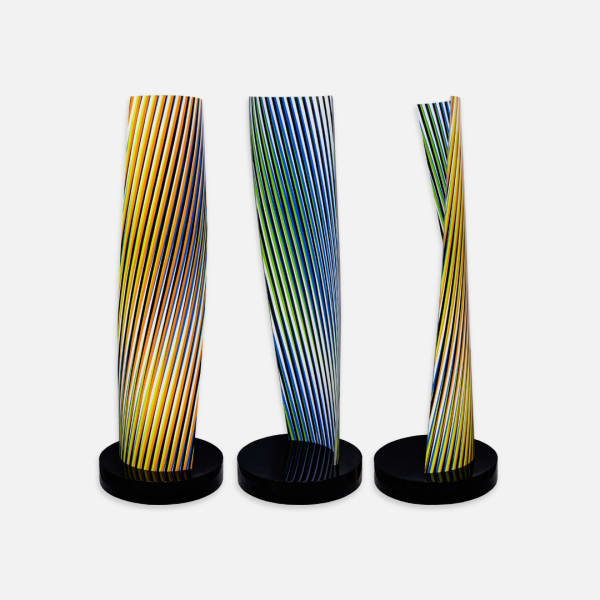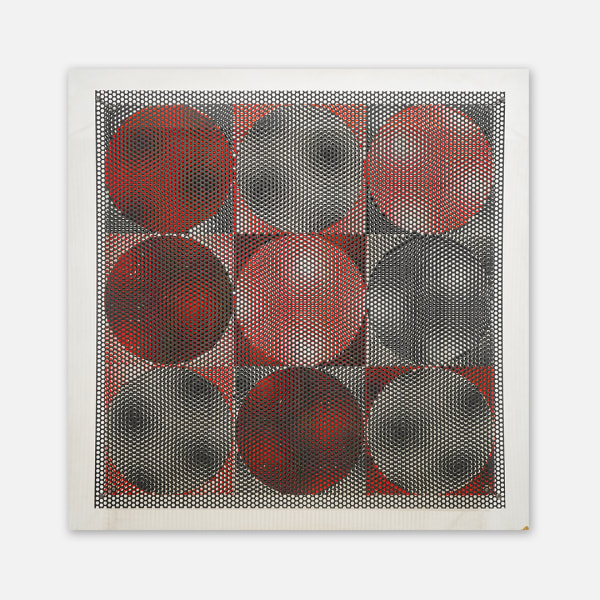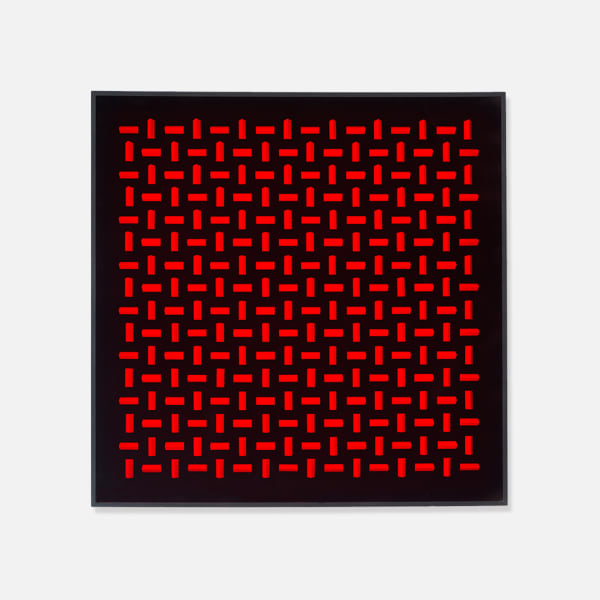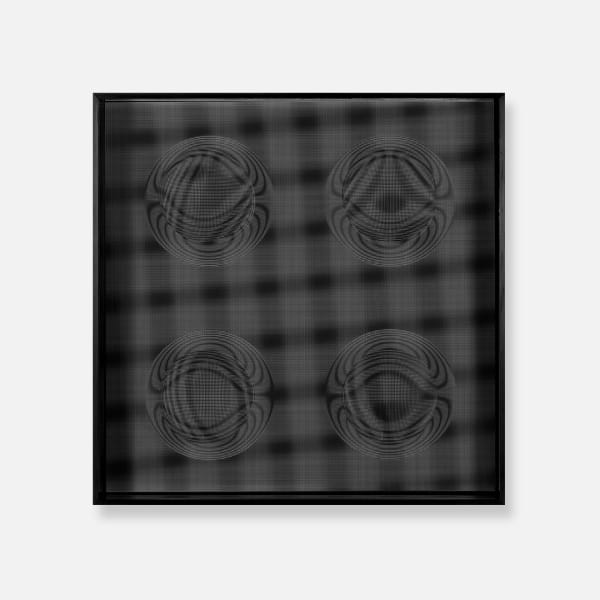VARIATION AND PERCEPTION: CRUZ-DIEZ ANNIVERSARY: Collective
Variation and perception
History and legacy of Kinetic Art
An exhibition celebrating the 98th anniversary of Carlos Cruz-Diez.
In the middle of the 20th century, a series of artists, groups and movements set out to generate a new relationship between viewers and the work of art, each in their own way and with their own concerns and interests. It was about fostering an active position, which went from mere contemplation or passive reception to the participation of the spectator. These artists studied perceptual mechanisms and the physiology of vision to produce works that seemed to change according to distance, position, or movement of the viewer. And they discovered that the incorporation of real time and space into the artwork were their main tools to achieve the variations they were looking for.
Kinetic Art was born, with works that tried to move from the static pictorial plane to the third and fourth dimensions. They functioned in the third dimension by incorporating to their inner mechanism the space between the elements of the work and the space between these elements and the spectators who interacted with them. And produced their effects also in the fourth dimension: only in time we see the work transforming itself.
This is how they seek to guarantee a new relationship with the audience, that was called to participate in the game that the work proposed, to complete it and put its mechanism into operation. These are works that play with the limits of perception, pushing the eye, the whole body and the intellect into unprecedented situations, sometimes even uncomfortable, that also intended a didactic nuance: learning with art, learning to see, to think about our relationships with the world and our position in and with society and reality.
On the occasion of the anniversary month of Carlos Cruz-Diez, now that the genius of color would have turned 98, Marión Art Gallery offers us an exhibition in which, together with a careful sample of representative works of his different investigations, which have been arranged in an interesting dialogue that the visitor will be able to appreciate through the different rooms, an extraordinary selection of works has also been gathered that serve as context and counterpoint to his artistic legacy.
Visitors are greeted with a set of works by great masters from the 60s and 70s that illustrate various paths of exploration of the main problems that interested Kinetic Art. Soto, Morellet and Asis, with their search for vibration by different means: superposition of planes, transparencies, rods, grids. The Italians Ennio Chiggio and Toni Costa, both participants of Gruppo N, and Marina Apollonio, who pursued the dynamization of the plane and the creation of structures that are transformed with the intervention of the spectators, through forms of art programmed, structured and thought from before their execution. The Argentine Julio Le Parc, founding member of the Groupe de Recherche d’Art Visuel, GRAV, interested in the capacity for social transformation of art through participation, with works in which the movement of the viewer has the greatest role. And finally, the Venezuelan Narciso Debourg and the German Klaus Staudt, whose works dialogue before the eyes of the visitor through the use of small, beveled solids that rise from the plane of the background or between the layers that make up the piece, and show the transformative power of repetition and difference.
The tour of this great exhibition is completed with a sample of the current scope of those approaches. Recent works by Héctor Ramírez and Felipe Pantone show how new generations of artists have taken up the plastic and conceptual foundations of the kinetic and constructive masters of the 20th century to create personal and renewed proposals. They are works of their time, in dialogue with the realities and possibilities of the late twentieth and early twenty-first centuries.
This exhibition is a tribute, not only to Carlos Cruz-Diez on the occasion of his anniversary, but to an entire artistic trend that set out to change our way of relating to art. It is the sample of a legacy that continues and has something to tell us, since it belongs to a historical time, but also to the ever-present moment. That is why we can always find ourselves in its intricate mechanisms of transformation.
Joel Bracho Ghersi
Panama, August 17, 2021








